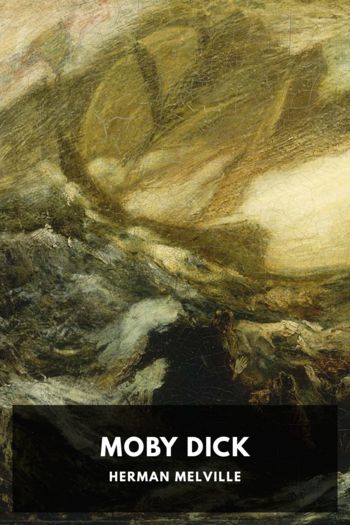Napoleon III and the French Second Empire Roger Price (novels to read .txt) 📖

- Author: Roger Price
Book online «Napoleon III and the French Second Empire Roger Price (novels to read .txt) 📖». Author Roger Price
22
However, to an important degree, its origins in a military coup would determine attitudes towards the restored imperial regime and its subsequent evolution.
On 20 December 1851, a plebiscite was held on the question of extending the authority of the President of the Republic. This procedure was to be a characteristic of the new regime. Louis-Napoléon was determined to secure a large and positive majority. It was made clear to officials at all levels, from the prefect to the village mayor and road repair man that their continued employment depended upon
enthusiastic campaigning. The essential theme was the choice between
‘civilisation and barbarism, social order and chaos’. The promise was an end to the long mid-century crisis and the inauguration of an era of order, peace and
prosperity. At the same time, every effort was made to intimidate opponents and to prevent them from campaigning. The result was predictable. A substantial positive majority was obtained, due in part to coercion but, primarily, because many voters were genuinely frightened at the prospect of further revolution, and large numbers were attracted by the prospect of a strong and active Bonapartist regime. About 7, 500, 000 voted ‘yes’; 640, 000 ‘no’; and 1, 500, 000 abstained. A large negative vote was characteristic of all the major cities with 80, 000 ‘no’ votes and 75, 000
abstentions countering only 132, 000 ‘yes’ votes in Paris. In the Nord, significant opposition was expressed in Lille with its socio-professionally mixed population, but in the mining and metallurgical centres of Anzin and Denain, 79 per cent and 84 per cent respectively of the overwhelmingly working class electorate voted
‘yes’. Two forms of opposition manifested themselves. A negative vote was
returned, especially among the urban professional and lower middle classes, and skilled and literate workers in areas of republican strength in the north, east and south-east. Paradoxically, the exceptions in these areas were places in which insurrections had occurred. There, terrified conservatives voted ‘yes’ in gratitude to Bonaparte while republican sympathisers did the same to escape further
repression. The other form of opposition was abstention, particularly evident in parts of the west and in Provence, where popular Legitimism and clericalism remained strong. Even then most Legitimists voted ‘yes’ (as did many former moderate republicans) and largely out ora concern for social order. The
conservative newspaper, L’Union bourguignonne (16 December 1851), warned that ‘those who vote NO declare themselves accomplices in the crimes of the demagogues’.
In symbolic promise of things to come, the plebiscite was followed by the
replacement of the image of the Republic on coins and postage stamps by that of 23
‘His Imperial Highness the Prince-President’ as he was now to be officially designated. On 1 January 1852 at a solemn service of thanksgiving in Notre Dame, the Archbishop of Paris called for God’s blessing on the regime using language which made it seem as if the Empire already existed and on 10 May new flags bearing the imperial eagle were distributed to the army. Relieved of their terror, the upper classes celebrated the carnival in 1852 with renewed enthusiasm. Within a year, following a similar, orchestrated campaign, a second plebiscite was held in far less dramatic circumstances (on 21–22 November 1852) with voters asked to approve the re-establishment of the hereditary empire. During a tour of the south in October, the future Emperor promised peace, order and prosperity. These themes, together with that of reconciliation, were taken up successfully by officials throughout the country. Again, open opposition was not tolerated. While 7, 824, 000 voters supported the proposed constitutional change, only 253, 000 voted against and 1, 500, 000 abstained – as before, mainly in the towns, in some ‘red’
areas of the south and in Legitimist dominated zones of the west. The Second Empire was proclaimed on 2 December 1852, a propitious date, the anniversary not only of Louis-Napoléon’s own successful coup, but of both the coronation of his uncle in 1804 and the first Emperor’s great victory at Austerlitz in 1805.
24
3
The authoritarian Empire
Objectives and achievements
The Second Empire would see major structural changes in the economy and society as well as innovations in the system of government. One of the fundamental
questions to concern us will be the effect of these on political behaviour; another will be how to escape from the deforming prism of republican historiography. The intentions of Napoléon III, whose personal power had been greatly reinforced by the coup, were obviously of considerable significance. As we have seen, the reputation of this strange man, inspired by a belief in his own destiny, suffered irreparably from the catastrophic defeat of the French armies in 1870. However, he cannot be dismissed (as he was by some contemporaries) as ‘Napoléon the Little’
(Hugo). The objectives of the new Emperor, his Napoleonic ideas, were clear. He intended to depoliticise government through the establishment of a strong and stable executive power capable of promoting social and economic modernisation and to ‘close the era of revolution by satisfying the legitimate needs of the people’.
The means to be employed included the restoration of the political and
administrative institutions conceived by Napoléon I, together with severe curbs imposed upon the activities of political ‘parties’. The Emperor, his authority legitimised by the popular vote, would serve as an almost mystical link between the state and society. Popular sovereignty would itself





Comments (0)